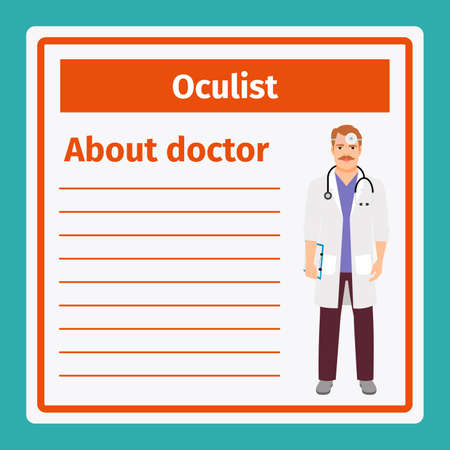Introduction to Collaborative Practice in UK Aesthetics
The landscape of aesthetic practice in the United Kingdom has evolved significantly over recent years, placing a renewed emphasis on collaborative working and multi-disciplinary approaches. In a sector that is as dynamic and diverse as aesthetics, practitioners are increasingly recognising the necessity of coming together across different disciplines—be it doctors, nurses, dentists, or allied health professionals—to deliver high-quality, patient-centred care. This collaborative ethos is not merely a professional preference but a cultural cornerstone within the UK’s healthcare framework, reflecting values such as respect, inclusivity, and patient safety.
Within the UK, collaboration is seen as more than just working alongside colleagues; it is about pooling expertise and insights to ensure that every patient receives holistic and ethical treatment. The cultural context of British healthcare—shaped by principles of the NHS and regulatory bodies—fosters an environment where open communication, mutual trust, and shared decision-making are paramount. These foundations underpin high standards of clinical care and support practitioners in navigating complex ethical and regulatory requirements unique to the aesthetics industry.
As demand for aesthetic treatments continues to grow, so does public expectation regarding safety, transparency, and accountability. Therefore, adopting collaborative practices is essential—not only to meet regulatory standards but also to nurture a culture where patients’ well-being always comes first. By embracing multi-disciplinary teamwork, UK aesthetic practitioners can better safeguard patients’ interests, uphold professional integrity, and maintain the trust that is so vital within this ever-evolving field.
Understanding Multi-Disciplinary Teams (MDTs)
Multi-Disciplinary Teams (MDTs) are at the heart of collaborative practice within UK aesthetics, serving as the backbone for safe, ethical, and effective patient care. These teams bring together professionals from various backgrounds—such as doctors, nurses, dentists, pharmacists, and skin therapists—each contributing their unique expertise to achieve optimal outcomes. This collaborative approach not only aligns with the General Medical Council (GMC) and Nursing and Midwifery Council (NMC) standards but also reflects the UK’s commitment to comprehensive patient-centred care.
Structure of MDTs in UK Aesthetic Practice
The structure of an MDT in aesthetic medicine is purposefully designed to ensure that every aspect of patient care is considered from multiple perspectives. Typically, teams will include core members who participate in every case and extended members who provide input when their specialist knowledge is required. The table below highlights common roles within a typical aesthetic MDT:
| Role | Expertise | Contribution to MDT |
|---|---|---|
| Aesthetic Doctor | Medical Assessment & Treatment Planning | Leads clinical decisions, ensures regulatory compliance |
| Nurse Prescriber | Patient Care & Medication Management | Administers treatments, monitors safety and wellbeing |
| Pharmacist | Pharmacology & Drug Safety | Advises on medication interactions and protocols |
| Skin Therapist | Non-Medical Treatments & Aftercare | Provides holistic advice and supports recovery plans |
| Dentist (where relevant) | Oral-Facial Anatomy & Procedures | Offers specialist insight for peri-oral treatments |
The Benefits of MDTs in UK Aesthetics
The integration of multi-disciplinary expertise ensures a well-rounded approach to patient care, promoting both safety and innovation. Some key benefits include:
- Enhanced Patient Outcomes: Multiple viewpoints reduce errors and improve treatment efficacy.
- Professional Development: Sharing knowledge across disciplines fosters continuous learning and upskilling.
- Comprehensive Risk Management: Diverse expertise allows for robust risk assessment and mitigation strategies.
- Cohesive Service Delivery: Streamlined communication leads to smoother patient journeys and higher satisfaction rates.
How MDTs Foster Professional Growth and Ethical Standards
By working collaboratively, team members are exposed to new methodologies, regulatory updates, and ethical dilemmas from different perspectives. This continual exchange not only strengthens individual competence but also upholds the professional integrity demanded by UK regulatory bodies. In essence, MDTs create a nurturing environment where both practitioners and patients benefit from shared wisdom and mutual respect—a cornerstone of best practice in UK aesthetics.

3. Ethical Standards in Collaborative Working
In the UK aesthetics sector, upholding ethical standards is absolutely vital when engaging in collaborative and multi-disciplinary practice. These principles are not merely regulatory obligations—they reflect a deep commitment to patient safety, trust, and respect within diverse professional teams. At the heart of effective collaboration lie several key ethical foundations that must always be honoured.
Informed Consent
Genuine informed consent is the cornerstone of ethical aesthetics practice. When professionals from different disciplines work together, it’s essential that patients fully understand who will be involved in their care, what each professional’s role entails, and the scope of any proposed treatments. This requires clear, jargon-free communication and ensuring that patients have ample opportunity to ask questions. Upholding informed consent demonstrates both transparency and respect for the individual’s autonomy—values that are highly prized across all corners of UK healthcare.
Confidentiality
Confidentiality remains sacrosanct even in the context of team-based working. Sensitive information must only be shared among those directly involved in a patient’s care and only on a need-to-know basis. Every member of a multi-disciplinary team has a duty to safeguard personal data according to both legal requirements (such as GDPR) and professional codes of conduct. By prioritising privacy, practitioners reinforce public confidence in aesthetic services and ensure that patients feel secure entrusting their wellbeing to collaborative teams.
Respect and Professional Boundaries
Effective collaboration thrives on mutual respect—not only towards patients but also among colleagues from varied backgrounds and specialisms. Recognising each professional’s unique expertise encourages open dialogue and learning, while maintaining appropriate boundaries prevents conflicts of interest or misunderstandings. Practitioners should champion a culture where every voice is heard and valued, fostering an environment where patient welfare comes first at every stage.
The Importance of Ethical Vigilance
As collaborative practice becomes more prevalent in UK aesthetics, ethical vigilance is crucial. Regular team discussions about ethical dilemmas, reflective practice sessions, and ongoing education help maintain high standards. By embedding these principles into daily routines, professionals can confidently navigate complex situations, ensuring that their collaborative efforts always serve the best interests of their patients.
4. Meeting UK Regulatory Requirements
Ensuring compliance with UK regulatory standards is a cornerstone of ethical and effective collaborative practice in aesthetics. As the sector continues to evolve, practitioners are increasingly required to navigate a complex landscape of legal and professional obligations. The principal regulatory bodies—including the Care Quality Commission (CQC), General Medical Council (GMC), Nursing and Midwifery Council (NMC), and Joint Council for Cosmetic Practitioners (JCCP)—each play a pivotal role in upholding safety, quality, and accountability across multi-disciplinary teams.
A Review of Key Regulatory Frameworks
Practitioners must be well-versed in the specific requirements set forth by these organisations. The table below provides a concise overview:
| Regulatory Body | Scope | Key Standards | Applicability |
|---|---|---|---|
| CQC | Health and social care services (including clinics offering certain aesthetic treatments) | Registration, safeguarding, quality assurance, patient safety | Clinics and premises providing regulated activities |
| GMC | Medical doctors | Professional conduct, informed consent, evidence-based practice | Doctors performing aesthetic procedures |
| NMC | Nurses and midwives | Code of conduct, continuing professional development, patient-centred care | Nurses/midwives involved in aesthetics |
| JCCP | Aesthetic practitioners (all disciplines) | Education standards, registration, public protection | All practitioners in non-surgical aesthetics (voluntary register) |
The Necessity of Compliance for Practitioners
Compliance is not merely a bureaucratic exercise—it is an ethical imperative that ensures patient safety and public trust. Collaborative teams must collectively uphold these standards to deliver seamless, high-quality care. For instance, when doctors, nurses, and allied professionals work together in aesthetic settings, each member must operate within their professional boundaries while respecting the guidelines relevant to their discipline. Regular training, transparent communication, and robust record-keeping are essential to meet both regulatory expectations and the highest standards of client care.
The Benefits of Adherence
By diligently meeting UK regulatory requirements, practitioners not only protect themselves from legal repercussions but also foster an environment where innovation can thrive responsibly. Adhering to these frameworks demonstrates professionalism and reassures clients that their wellbeing is at the heart of every decision made within multi-disciplinary teams.
5. Communication and Accountability Across Disciplines
Clear communication is the cornerstone of collaborative practice within UK aesthetics, especially in multi-disciplinary settings where professionals from diverse backgrounds come together. Effective dialogue ensures that all team members—whether doctors, nurses, dentists, or allied health professionals—are aligned in their understanding of patient needs, treatment plans, and ethical boundaries. By fostering an environment where open discussion is encouraged, aesthetic teams can share insights and highlight potential risks before they escalate into issues.
Shared Decision-Making for Enhanced Patient Outcomes
In the UK aesthetic sector, shared decision-making goes beyond simple consultation; it actively involves each practitioner’s expertise to ensure comprehensive care. Through collective input, practitioners can evaluate treatment options from multiple perspectives, weighing medical evidence against patient expectations and regulatory requirements. This approach not only supports informed consent but also empowers patients to make choices that align with their values and best interests.
The Role of Documentation in Accountability
Accountability thrives when there is meticulous record-keeping and transparent documentation of every step in the patient journey. By clearly noting discussions, decisions, and delegated responsibilities, teams create a traceable record that upholds professional standards and regulatory compliance. Should any concerns arise, this transparency enables swift resolution while protecting both practitioners and patients.
Cultivating a Culture of Trust and Professional Respect
Ultimately, clear communication and collective accountability build a culture of trust across disciplines. Each professional is empowered to speak up, raise concerns, or offer alternative viewpoints without fear of reprisal. This not only enhances patient safety but also strengthens the team’s cohesion and resilience in the face of ethical dilemmas. By prioritising these values in daily practice, UK aesthetic teams demonstrate their commitment to safe, ethical care that meets the highest regulatory standards.
6. Navigating Challenges and Conflict Resolution
Collaborative practice in the UK aesthetics sector is immensely rewarding, but it also presents its fair share of challenges. Multi-disciplinary teams bring together professionals from diverse backgrounds—be it medical practitioners, nurses, pharmacists, or aestheticians—each with their own perspectives and expertise. While this diversity enriches patient care, it can sometimes lead to misunderstandings or conflicts. Navigating these challenges requires a thoughtful, practical approach grounded in respect for ethical and regulatory standards.
Identifying Common Barriers to Collaboration
The most frequent barriers include differences in communication styles, varying expectations regarding roles and responsibilities, and a lack of clarity around decision-making authority. Professional hierarchies and preconceptions about other disciplines may also hinder open dialogue. Furthermore, time pressures and administrative burdens can make effective collaboration feel like an added challenge rather than an integrated part of daily practice.
Practical Approaches to Overcoming Barriers
To foster successful multi-disciplinary working, start by establishing clear protocols that define each team member’s role in line with regulatory guidelines such as those set out by the General Medical Council (GMC), Nursing and Midwifery Council (NMC), and the Joint Council for Cosmetic Practitioners (JCCP). Regular team meetings provide a structured opportunity for everyone to voice concerns and clarify objectives. Investing time in joint training sessions can help develop mutual respect and understanding of each discipline’s contribution to aesthetic care.
Constructive Conflict Management Strategies
Inevitably, disagreements will arise. The key is to address them constructively rather than allowing issues to fester. Encourage open communication by creating a psychologically safe environment where every team member feels valued and heard. When conflict emerges, focus discussions on shared goals—the safety and satisfaction of patients—and use evidence-based guidelines as a reference point for decision-making. Should disputes persist, consider involving a neutral mediator who is familiar with UK aesthetics regulations to guide resolution.
Cultivating a Culture of Respectful Collaboration
Ultimately, overcoming challenges within collaborative practice is about cultivating a culture rooted in respect, empathy, and continuous learning. Celebrate successes together, reflect on setbacks without assigning blame, and remain committed to professional development as a team. By doing so, you not only meet ethical and regulatory standards but also set the gold standard for patient-centred care in the UK aesthetics field.
7. The Future of Collaborative Practice in UK Aesthetics
As the field of aesthetics continues to develop in the UK, collaborative practice and multi-disciplinary working are set to become even more integral to both ethical standards and exceptional patient care. The future landscape is being shaped by emerging trends, technological advancements, and an ever-deepening commitment to putting patients at the centre of all decision-making.
Embracing Emerging Trends
Innovations such as telemedicine, digital health records, and artificial intelligence are streamlining communication across disciplines and improving access to specialist expertise. By leveraging these tools, aesthetic practitioners can collaborate more efficiently, ensuring that every patient receives comprehensive and up-to-date care tailored to their individual needs.
A Culture of Continuous Improvement
The UK’s regulatory bodies are increasingly advocating for ongoing professional development and reflective practice within multi-disciplinary teams. This culture of continuous improvement encourages practitioners to regularly evaluate their approach, seek feedback from colleagues, and adapt to new evidence or guidance. Such openness not only enhances professional competence but also strengthens public trust in aesthetic services.
Prioritising the Patient Experience
At the heart of this evolving landscape is a renewed focus on the patient experience. Collaborative practice enables holistic assessments, where each member of a multi-disciplinary team contributes unique insights—from medical safety to psychological wellbeing—ensuring that treatments are not only effective but also ethically grounded and personally meaningful for each patient.
Nurturing Professional Relationships
Looking ahead, fostering respectful, open relationships among professionals will remain crucial. Building strong networks within the aesthetics community helps practitioners share knowledge, support one another through complex cases, and uphold shared values of integrity and compassion.
By embracing change and committing to collaboration, the UK aesthetics sector is poised to continue raising standards—delivering safer outcomes, richer experiences, and greater satisfaction for both patients and practitioners alike.


